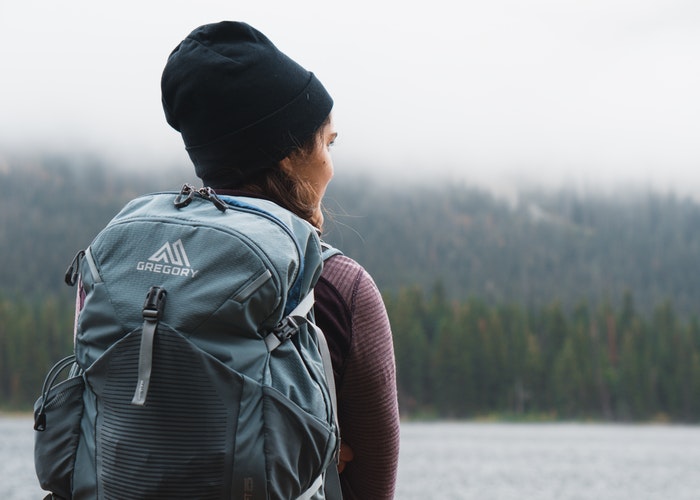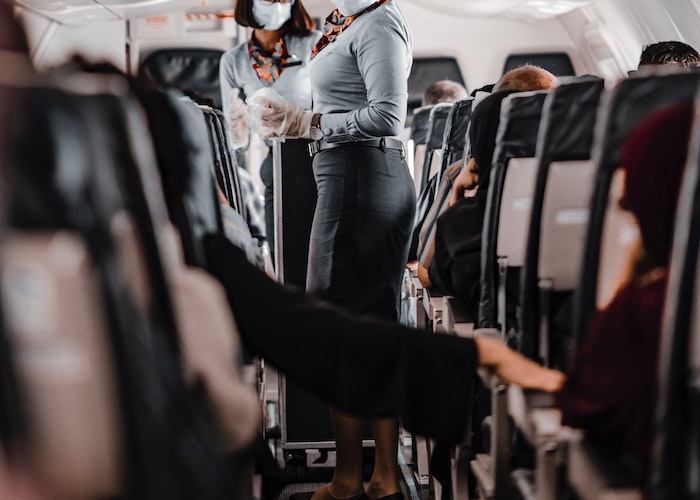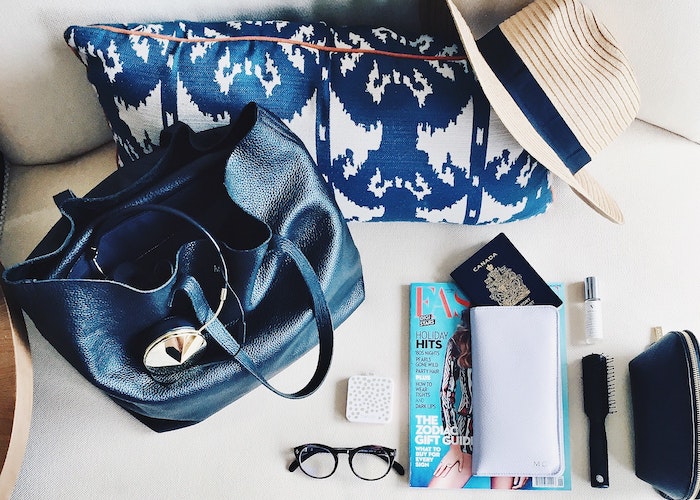
I love to travel, and there’s no secret that “backpacking” can be a convenient and cost-effective method of exploring. Having all your belongings in one small, easily-transportable bag can make you much more agile when exploring new places, and the money you don’t spend on airline baggage fees adds up.
I will never be a proper backpacker: Rocking hiking boots and nylon pants while camping isn’t my thing. But I have traveled for weeks at a time out of a regular backpack while maintaining my regular style. People often ask me, “where’s your suitcase?” No matter what kind of traveler you are, we can all benefit from cutting a little suitcase bulk, and there are a few rules to keep in mind for doing so.
Consider the big picture.
First, pack for who you are and the trip you’re taking, not who you wish you were or the trip you think you should be taking. Before we get into specifics, ask yourself: What do you like to do on vacation? And, equally important, what do you not want to do?
I have a history of toting items I really don’t need. For example, I’m not a huge hiker, but I wish I were, so I’ve spent many trips toting heavy shoes and fanny packs, just to be annoyed that I never used them. I prefer walking miles in Birkenstocks, exploring historic downtowns, finding fun cheap eats, and attending the local theatre. Therefore, reasonably comfortable shoes and nice-ish clothes are a must — but that’s just me.
Perhaps you love breweries or attending local teams’ games. Throughout your packing process, be true to yourself. Keep this mantra in your head: “Does this fit who I am and the trip I’m taking?” It can save a lot of headache in the long-run.
Get specific.
To help figure out what to bring, think about the details of your trip. Before embarking on a new adventure, I get out of a piece of paper and ask myself the following questions:
- How long will I be away?
- What is the season and climate of my destination?
- Are there any activity-specific items I need? (headlamp, swimsuit, etc.)
- Will I have access to the same resources as I do at home? (hygiene products or a washing machine – these are especially relevant if traveling abroad)
Asking these questions helps me realize what I do and don’t need to bring. For example, if I’m staying with a friend, I don’t need to pack a towel. If my prescriptions are easily attainable in that country, I don’t need to worry about packing extra in case of emergencies. Addressing these concerns first will make the actual process much easier.
In addition to answering logistics questions, create a “bare necessities” list. My best friend jokes that all you really need when traveling is your driver’s license, credit card, and favorite bra. She concludes that at the end of the day, everything else is fairly easy to replace. My “bare necessities” list is a little different and includes my passport, prescriptions, and two credit cards. I know that no matter what happens, I can get by with those necessities.
Develop your own bare necessities list. It can be anxiety-inducing leaving home with very few things, but if you know you have your minimum bases covered, you’re golden. I also scan through this mental list whenever relocating to the next hostel or AirBnB – it’s a quick and easy way to prevent some stressful situations.
Build a layering, capsule wardrobe.
All the clothes you bring should work well together, giving you maximum use of each item. Try to make everything color coordinate by packing a lot of neutral tones. My travel wardrobe tends to be black, white, grey and olive, but that’s not a hard-and-fast rule.
Also, a few simple items can extend the use of your others. A simple cardigan sweater can turn short-sleeve shirts into winter wear. A pair of leggings can warm up jeans or make a dress more comfortable on a brisk day.
Pay attention to fabric.
It’s time to rediscover the joy of polyester. Seriously, though. It gets a bad rap, but polyester can be a secret weapon when traveling for long periods. Certain blends are exceptionally wrinkle-resistant, fast-drying, and most importantly, easy to pack. While linen also packs small, it can also wrinkle like crazy.
Generally, try to avoid thick cotton, bulky sweaters, and ultra-thick denim. If you dream of wearing a particular sweater while gazing at the Eiffel Tower, by all means, bring it — but know you’ll have to cut in other areas.
I like doing what I’ve artfully dubbed the “swiss roll test.” If you’re unsure whether an article of clothing takes up too much space or not, roll up the clothing item like a happy little swiss roll. If the rolled-up item’s diameter is similar to that when you put your thumb and forefinger together, you’re golden. If it’s closer to when both hands’ fingers and thumbs make a circle, maybe opt for another garment. When I’m shopping for new clothes, I’ll often roll up items right there in the store to see how they might fit.
Challenge assumptions about what you need.
This is especially applicable for non-clothing items, such as toiletries. Consider the toiletries, cosmetics, and hygiene items you usually take with you. What could be replaced for something smaller, more packable, or more convenient?
For example, a travel hairbrush takes up about 30% of a regular-sized hairbrush. There will be a few items you need to take exactly as-is, and that’s totally fine. But think critically about everything — what can you get along with or without? Could you bring the single eyeshadow shades you need, rather than the whole compact? Do you have smaller versions of your brushes? Do you have a thinner or smaller makeup bag?
In addition to reducing space taken, look closely at your whole routine. Is there any part of your routine you could go without doing for a few weeks? I tend to forget to moisturize while traveling, so I leave it behind, and I like using an eyelash-lengthening serum, but I leave it home on bigger trips. Shorten your routine — bringing even one or two fewer tiny jars can save space.
Don’t pack for maybe.
I like to be prepared, and that means packing for every possibility that might arise during my travels. An impromptu date, a hike, a safari — who knows? But the fact of the matter is, most of those scenarios won’t occur, and if they do, you can buy them at your destination. You can survive as long as you have your “bare necessities” list, so don’t pack for every possible scenario.
A friend of mine often has an upset stomach, so It’s reasonable for her to bring Pepto Bismol. But it’d be silly for me to pack it. If I needed some, I could pick it up. Don’t stress too much about not having packed enough — if you’re traveling and realize you need more socks, you can get more socks. You can buy a cheap umbrella if you need one. Plan for the most likely scenario and know that most inconveniences can be easily solved.
*****
Looking at your trip details and considering the thoughts above, make a guess at what you’ll need by creating a first draft packing list. I like to begin by writing out my list, as it can help prevent distractions. I then physically gather the items, as it helps to visualize where extra items can be cut. There will probably be too much stuff round one, and that’s okay — there always is for me. I then go item-by-item, paring down the extras until I’m happy with the size of my loot. And if all else fails, and you can’t squeeze everything into a single backpack, so be it. The most important thing is that you can thoroughly enjoy your travels — happy packing!
Shelley Bushman is a wannabe-nomad and enthusiasm enthusiast based out of Provo, Utah. When not managing events & projects, you’ll find her plotting her next trip or working toward her goal of reading every Shakespeare play. (Currently 14/37.) Follow along with her daily nonsense on IG @bushmanandapeck.
Image via Pexels
Like this story? Follow The Financial Diet on Facebook, Instagram, and Twitter for daily tips and inspiration, and sign up for our email newsletter here.




